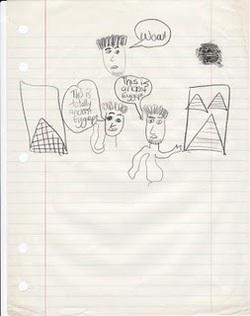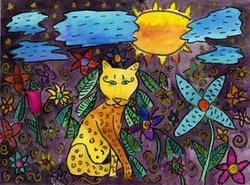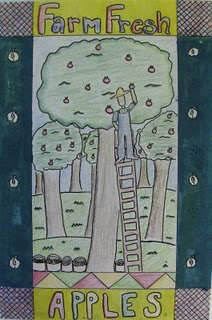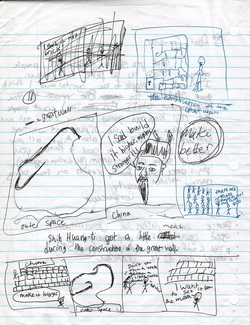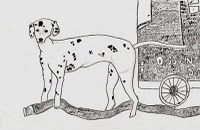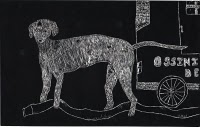Pseudo-Naturalistic: Realistic Drawing
AGE: 12-14 YEARS
As children grow older, the process of making art is no longer spontaneous and uncontrolled. Emphasis shifts from a focus and enjoyment of the process of art making to a rapid increase on the value of the final product. In the pseudo-naturalistic stage (Lowenfeld), the children's ability to make meaningful marks becomes a critical component of their advancing skills. Subject matter during this period is often dominated by one's self. As children grow into adolescents, they aim to please others (especially their peers) and "get things right."
The emphasis on learners' ability to represent "real life" leads some artists in this stage to set high standards for "good art" and strive for "perfection," as defined by realistic representations. Because increased emphasis is place on the final product, students often feel dissatisfied with the work they produce. During this period, students must often ask themselves whether they wish to continue making art or end their fomal art education.
Characteristics to look for:
The emphasis on learners' ability to represent "real life" leads some artists in this stage to set high standards for "good art" and strive for "perfection," as defined by realistic representations. Because increased emphasis is place on the final product, students often feel dissatisfied with the work they produce. During this period, students must often ask themselves whether they wish to continue making art or end their fomal art education.
Characteristics to look for:
|
|
|
During this period, students are often encouraged by instructors to explore different media. This drawing was first drawn with pencil and then traced with sharpie marker. Next, watercolors were used to add color. Emily's interest in bright, bold colors is contrasted by the dark background. These choices make the main animal pop.
In this drawing, the artist used simple imagery to create a poster. The most important elements are drawn in greater detail. Scale is used to create a sense of perspetive--the main action is located in the foreground, and the surrounding trees diminish in scale as they recede in space. The border of apples (seen in cross-section) reinforces the theme of the poster.
|
During this stage, students feel more comfortable drawing from observation. For this assignment, Emily sketched an image of a dog at a firehouse with a hose. Emily was unsure how to draw a Dalmatian, so she did some research and found images of the dog to help her compose the picture. She then transfered the drawing onto a scratch-board and used a sharp tool to create an image with a high level of contrast.
|
